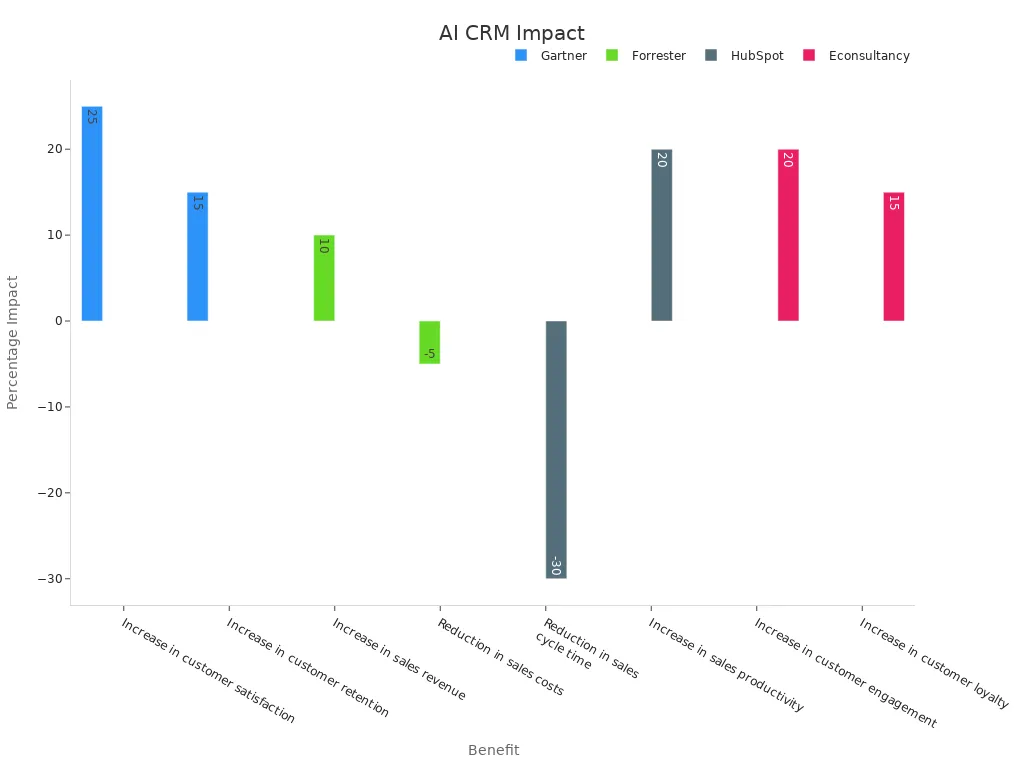Detect Engagement Drop-Off using AI

Imagine a team notices user retention falls from 100% on Day 0 to only 27% by Day 1. They want to detect engagement drop-off and find out why so many users leave after their first visit. AI can detect engagement drop-off by analyzing thousands of sessions, showing exactly where users lose interest. Predictive analytics can forecast when users might leave. Real-time funnels reveal that mobile users quit checkout more than desktop users. This quick information helps teams act fast, keep more users, and make smart choices using data.
Key Takeaways
AI helps teams see when users stop caring by looking at things like clicks, how long people stay, and feedback. It does this fast and gets it right. Real-time checks and smart guesses help companies act quickly. This keeps users interested and lowers the number who leave. AI makes user experience better by making content fit each person. It also sends messages at the right time and finds problems with tools like heatmaps and sentiment analysis. Companies need to use AI in a careful way. They must follow data rules and keep models up to date. Good teamwork between tech and marketing teams is important. Clear goals and checking results often help AI tools give real business value.
Detect Engagement Drop-Off

Immediate Detection
AI systems can spot engagement drop-off by watching user actions right away. These systems look at things like who signs up for webinars but does not attend, how long people read emails, and what content they view. If users spend little time or skip steps, machine learning models notice these actions. Teams get alerts when users stop paying attention, so they can respond fast.
AI tools make graphs to show how users move through the app.
Machine learning finds drop-offs by seeing patterns like missing webinars.
The system can stop sending promo emails to users who seem less interested, which helps keep trust.
AI sends content in ways users like, such as mobile messages after 8 PM if that is their favorite time.
Behavioral AI sends alerts to teams when users act very differently, so teams can follow up.
Companies use this data to change their plans. For example, a fitness app tracked things like when users started workouts or joined forums. The app used clustering to group users by how active they were. Predictive models showed when users might leave, like after missing early workouts. The app then sent special messages to bring users back. This helped the app keep 25% more users for 30 days and made session times 40% longer.
Real-Time Monitoring
Real-time monitoring lets companies see engagement drop-off as it happens. AI tools like Mixpanel watch what users do and where they leave in funnels. These tools give numbers on how many users stay or leave over time.
Tip: Using real-time data helps teams see changes and fix problems fast, so fewer users leave.
AI checks onboarding chats to find where users get stuck or lose interest. Tools like IBM Watson and Google Cloud Natural Language look at feelings and patterns right away. These insights help teams find tough spots and moments when users get upset. When AI sees a drop-off, it can send a check-in or change content to keep users interested.
Automated funnel checks find tough spots like sudden exits or slow steps.
Predictive modeling helps teams act early, like giving special help to users who might leave.
Sentiment analysis at each step shows where users feel bad, so teams can help fast.
A SaaS company used these ideas to get 17% more users to pay after a trial. By helping users who might leave with special onboarding, the company kept more users and had less drop-off. Real-time monitoring helps companies spot drop-off and act before users leave for good.
Why It Matters
Retention Impact
AI can help companies keep more users. It finds when people lose interest and lets teams act fast. This helps more users stay with the company. For example, Slack used AI to study how people use their app. They stopped 30% more users from leaving. Netflix keeps over 90% of its users. About 80% of what people watch on Netflix comes from AI suggestions. Amazon uses AI to give new users special offers. This also helps keep more users.
Metric | Value |
|---|---|
Netflix retention rate | Over 90% |
Percentage of Netflix activity via AI | 80% |
Retention rate improvement with AI | Nearly 25% |
Slack churn reduction with AI analytics | 30% |
Netflix annual savings from churn prevention | Over $1 billion |
AI works better than old ways because it uses smart numbers and live data. The Vodeo app uses 24 types of genres and many suggestion spots to keep people interested. These ideas make people use the app longer and feel happier. When people trust AI, they use the app more and stay longer, even on short video apps.
Companies that use AI to find drop-off make more money. If they keep 5% more users, profits can go up by 95%.
User Experience
AI helps keep users and makes their experience better. New AI tools check how happy users are with things like Output Quality Score, Net Promoter Score, and Customer Satisfaction Score. These numbers show what users like and where they have problems.
Metric Category | Metric Name | Description & Example |
|---|---|---|
AI User Satisfaction | Output Quality Score (OQS) | Measures accuracy and usefulness of AI output |
Net Promoter Score (NPS) | Shows loyalty and satisfaction | |
Customer Satisfaction Score (CSAT) | Captures user sentiment after AI interactions | |
System Quality | Uptime | Tracks AI system availability |
Error Rate | Measures system stability | |
Adoption & Usage | Time-to-Value (TTV) | Time for users to see benefits from AI |
Delight Moments | Tracks when AI exceeds user expectations |
AI tools like Mixpanel and Amplitude use live data to find where users get stuck. They also suggest ways to fix problems. Hotjar uses AI to make heatmaps and session videos. These show where users get upset or happy. Teams use this to change things and make the app easier and more fun for everyone.
Indicators

Behavioral Metrics
Behavioral metrics help teams see how users use digital products. These metrics include how often users visit and how long they stay. They also look at how many people join in and how they react to notifications. Teams watch for clicks, scrolls, and hovers to find where users stop caring. Event tracking and funnel analysis show where users leave during onboarding or important steps. Predictive models notice when fewer sessions happen and warn about users who might leave. Behavioral segmentation puts users into groups, like those who always use the app or those who might quit. Teams use surveys, interviews, analytics, and heatmaps together to get a full view of user engagement.
Picking the right KPIs, like conversion and retention rates, helps teams watch user activity and make smart changes.
User Flow
User flow diagrams show the steps users take in a product. These diagrams point out where users pause, get stuck, or leave. Analytics tools collect data on how many users finish tasks, convert, and how long they stay. Teams use this data to find hard spots and slowdowns. By splitting users into groups and checking their actions, teams spot when users do not follow the best path. A/B testing tries out different designs to see which one keeps users interested longer. Teams keep making changes so user flows fit what users need and boost engagement.
Evidence Type | Description & Findings |
|---|---|
Engagement indicators like AES, PMLQ, and SUS have strong links, showing they help find engagement. | |
Clustering Analysis | Two groups—cognitive involvement and media literacy—show engagement has many parts, so teams need different indicators. |
Heatmaps
AI-powered heatmaps show where users click and move most on a page. Color changes show busy and quiet spots. Click heatmaps show which links and buttons are popular. Scroll heatmaps show how far users read and where they stop. Mouse movement heatmaps track where users look the most. AI checks these patterns, finds frustration, and marks odd actions. Companies like Amazon and The North Face use AI heatmaps to get more people to buy and enjoy their sites. Studies say businesses using AI heatmaps can get up to 25% more conversions. These tools help teams Detect Engagement Drop-Off and put content in better spots.
AI heatmaps and session recordings together give teams deep looks at user actions, so they can make the user experience better right away.
Technologies
Machine Learning
Machine learning helps companies see where users stop caring. These systems look at lots of user data to find patterns. Teams use numbers like precision, recall, F1-score, and AUC-ROC to check how well models work. High scores show the model can tell who will leave or stay. Machine learning tools watch conversion rates, churn rates, and action completion rates. They also use session replays, heatmaps, and user surveys to find problems. One company got 25% more people to finish onboarding after using AI to fix confusing steps.
Machine learning checks user journeys to find drop-off spots.
AI tools guess trends and give ideas to keep users interested.
Teams get clear tips to make the user experience better.
Predictive Analytics
Predictive analytics uses old data to guess what users might do next. These tools show conversion funnels and where users may leave. Real-time telemetry lets teams see changes as they happen. Predictive models send reminders or offers to users who might leave. This helps companies act before users go, so more people stay.
NLP
Natural Language Processing (NLP) reads and understands what users say in feedback, reviews, and chats. NLP tools find negative words or unhappy feelings in messages. This helps teams learn why users lose interest. Companies like Netflix and Stitch Fix use NLP to make content and offers fit each user, which helps keep users and sell more.
Company | NLP Application | Outcome / Impact |
|---|---|---|
Netflix | Looks at what viewers do, search for, and subtitle data to suggest content | Saved about $1 billion each year by keeping more users |
Stitch Fix | Checks customer feedback and style likes to suggest clothes | Kept 30% more customers and raised order value by 15% |
General BI | Looks at reviews and social posts to find unhappy users and guess what they might do | Helps spot changes in what users want and stops them from leaving |
CRM Systems
AI-powered CRM systems use machine learning to study customer data and guess who might leave. These platforms, like Zoho CRM and Salesforce, send special offers and reminders automatically. Real-time analysis helps teams react fast to changes in user actions. Automated campaigns and targeted deals help keep users loyal and interested.

Benefit Description | Statistic/Impact | Source |
|---|---|---|
25% increase | Gartner | |
More customer retention | 15% increase | Gartner |
More sales revenue | 10% increase | Forrester |
Lower sales costs | 5% reduction | Forrester |
Shorter sales cycle time | 30% reduction | HubSpot |
More sales productivity | 20% increase | HubSpot |
More customer engagement | 20% increase | Econsultancy |
More customer loyalty | 15% increase | Econsultancy |
AI-powered CRM systems help companies Detect Engagement Drop-Off, keep more users, and grow sales by using smart data.
Process
Data Collection
Teams collect data from many places to learn about user engagement. They look at system usage logs, sensor data, and social media activity. Interviews and focus groups help teams learn about feelings and actions. Self-report questionnaires and ecological momentary assessments give feedback right away. Teams use audit tools and text-mining software to study social media talks. These ways help teams see how users use digital products.
System usage data shows how often users do things.
Sensor data gives facts about what users do.
Social media analysis finds trends and feelings.
Interviews and focus groups show why users act a certain way.
Preprocessing
Good data is needed for AI models to work well. Teams clean data by taking out repeats and filling in missing parts. They find and fix outliers so results are not wrong. Teams make sure formats like dates and units match. AI tools help clean data, but people still check for special problems. Teams add details from trusted sources and remove things that are not needed.
Take out repeats and make formats the same.
Fill in missing parts with smart guesses.
Find and fix outliers for better results.
Model Training
Teams teach AI models using labeled engagement data. They check how well models work with accuracy, precision, recall, and area under the precision-recall curve. Teams use hold-out and k-fold cross-validation to test models. K-fold cross-validation splits data into parts and trains the model many times. This helps teams build models that find drop-off points well.
Use accuracy and precision-recall to check models.
Try k-fold cross-validation for strong results.
Train models with different engagement data.
Insights & Action
AI insights help teams know what to do next. Dashboards and alerts show where users lose interest. Teams change content, send messages, or redesign features using these insights. Numbers show the real results:
Industry / Company Type | Quantitative Outcomes | |
|---|---|---|
Media Streaming Service | Personalized recommendations | Higher retention, improved satisfaction |
E-Learning Platform | Tracking student interaction | Customized learning paths, better educational outcomes |
Retail Brand | In-store digital engagement | Increased sales, optimized shopper content |
AI actions help keep more users, make experiences better, and grow the business.
Examples
E-Commerce
Online stores use AI to watch each step shoppers take. AI tools check clicks, adding to carts, and trying to check out. When people leave things in their carts, AI sends reminders or offers discounts. These steps help stores get back lost sales. For example, a big retailer used AI heatmaps to see where users stopped scrolling. The team saw many users left after seeing high shipping costs. They tried free shipping banners and cart abandonment dropped by 20%.
AI in e-commerce helps teams see where buyers lose interest. Fast action means more sales and loyal customers.
Key Results Table:
AI Feature | Engagement Drop-Off Solution | Outcome |
|---|---|---|
Cart Monitoring | Abandonment emails | +15% conversions |
Heatmap Analysis | UI changes | -20% drop-offs |
Predictive Offers | Timely discounts | +10% retention |
SaaS
Software-as-a-Service companies need users to stay active to grow. AI checks onboarding steps, feature use, and support requests. If users skip tutorials or stop using features, AI sends tips or sets up a support call. One SaaS company saw users leave after the first login. The team used AI to show in-app guides at key times. This change made user activation go up by 18%.
AI finds users who need help.
Teams use these insights to make onboarding better.
SaaS companies using AI for engagement see fewer cancellations and happier customers.
Media
Media platforms often lose viewers fast. AI looks at video watch time, how far people scroll, and ad clicks. If viewers stop watching early, AI suggests shorter videos or playlists just for them. A streaming service used AI to spot when users paused or skipped content. The team changed recommendations and session length went up by 25%.
AI-powered suggestions keep viewers interested.
Teams use live data to change content.
Media companies using AI to spot drop-off keep viewers longer and earn more from ads.
Challenges
Privacy
AI-powered engagement systems use a lot of user data. Many people worry about how companies use this information. Surveys say 68% of people worldwide care about online privacy. More than half think AI is a risk to their privacy. About 70% of Americans do not trust companies to use AI the right way. Most users feel companies use their data in ways that make them uneasy.
To fix these worries, companies must follow strict privacy rules. They should build privacy into AI systems from the start. Data minimization means only collecting what is needed. Encryption and strong access controls keep data safe from hackers. Regular checks and clear data rules help users trust companies. Laws like GDPR and CCPA say companies must get clear consent and let users control their data.
Privacy risks include data leaks, misuse of personal info, and even tricking people without asking. Real cases, like the Facebook-Cambridge Analytica scandal, show how bad privacy mistakes can be.
Technical Limits
AI systems need good data and strong computers. Sometimes, data is missing or wrong, which can cause mistakes. AI models can be unfair if the training data does not show all users. This can lead to unfair results or missed drop-off points.
Some privacy tools, like differential privacy or federated learning, protect user data but can make AI less accurate. Companies must balance privacy and how well AI works. Cybersecurity risks are still high, with 84% of people saying it is their top worry. In 2024, data leaks hurt about one billion people, and the average cost was $4.88 million.
Implementation
Using AI for engagement takes careful planning. Teams must connect AI tools to old systems, which can be hard. Staff need training to use new dashboards and understand AI insights. Companies must check often for mistakes or misuse.
Good tips include starting with small test projects, using many kinds of data, and updating models often. Clear talks between tech and business teams help avoid confusion. Regular checks make sure the system works right and follows privacy rules.
Best Practices
Model Updates
AI models for engagement detection need updates often to work well. Teams watch important numbers to know when to retrain or change models:
Evals Error Rate: If the error rate goes up, the model makes more mistakes. This can mean the data is different or the model does not fit users anymore.
Precision and Recall: These numbers show how well the model finds real drop-off points. If these scores go down, the model misses important signs.
Response Time: Slow answers make users upset and they might leave.
Span Latency and Errored Spans: These show slow or broken parts in the system.
User Feedback: Bad comments or low ratings mean the model needs to get better.
User Tracking: More drop-offs and less engagement show problems with the model or the user experience.
Teams use these numbers to keep AI models working well and meeting what users want.
Collaboration
When technical and marketing teams work together, engagement analytics get better. Many companies let AI do simple jobs, while people focus on planning and new ideas. This teamwork helps teams act fast and make user experiences better.
Teams make shared goals and talk clearly, using the same numbers like conversion rates and user happiness.
Both groups look at the user journey together, using pictures to find important moments.
Regular workshops and shared notes help teams learn from each other.
Shared dashboards and live data keep everyone up to date.
Teams do user tests and A/B tests together to see what works best.
Agile ways, like shared sprints and reviews, help teams change quickly.
This teamwork makes marketing stronger and helps AI insights turn into real business wins.
Measuring Success
To see if AI engagement tools work, teams pick the right numbers to track. They write down which numbers they use and why those matter. Teams check these numbers often, using both their own experts and outside helpers.
User engagement numbers, like click-through rates and dwell time, show if users stay interested.
Statistical numbers like precision, recall, and F1 scores help teams see if the model is good.
Quality checks and set limits make sure the AI meets business goals and is fair for everyone.
Checking often and getting feedback from many people helps teams keep their AI tools strong, fair, and useful in real life.
AI lets teams find Engagement Drop-Off fast and with good results. AI gives tips that help keep more users and grow the business. Teams can try out AI tools or check their current engagement numbers. They should search for trends, try new ideas, and see what changes. Doing these things helps companies stay ahead and make better connections with users.
FAQ
How does AI detect engagement drop-off?
AI watches what users do, like clicking or scrolling. It looks for signs that users are losing interest. Teams can see these signs and fix problems fast to keep users.
What data does AI use for engagement analysis?
AI checks things like user sessions, heatmaps, chat logs, and feedback forms. It also looks at numbers like bounce rates and conversion funnels. This helps AI find out where users stop using the app.
Can AI tools work with existing analytics platforms?
Most AI tools can connect with Google Analytics, Mixpanel, or Amplitude. Teams can add AI insights to their dashboards for a full picture.
Is user privacy protected when using AI for engagement?
Companies follow rules like GDPR and CCPA to protect privacy. They use encryption and only collect needed data. Teams must ask users before using their information and keep it safe.
What results can businesses expect from AI engagement tools?
Businesses usually get more users to stay, happier users, and more sales. For example, AI can help lower drop-off rates by up to 25% and increase conversions.
See Also
Top SEO Trends And Forecasts To Follow In 2024
How To Boost Engagement Using TikTok Analytics Tools
Strategies For Outperforming Competitors Through Content Analysis

